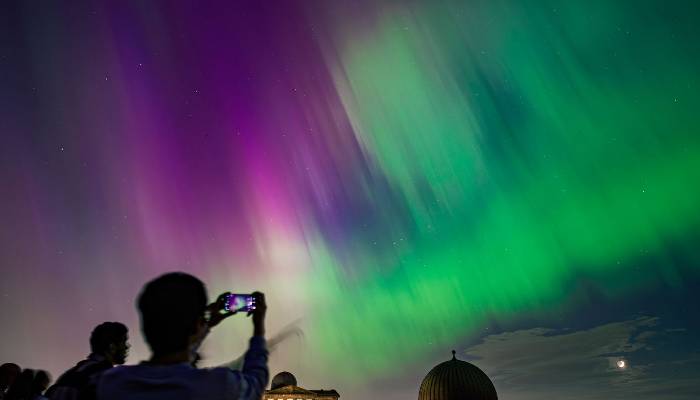
Excitement is brewing among sky-watchers as scientists predict more dazzling Northern Lights in the coming weeks.
As per BBC, scientists anticipate that it will remain sufficiently large and complex to produce further explosions, potentially leading to additional sightings of the Northern Lights.
Since the captivating event last Saturday, the Sun has continued to release heightened levels of radiation.
However, a significant solar flare on Tuesday disrupted high-frequency radio communications worldwide.
This heightened solar activity is attributed to the Sun nearing its "solar maximum" phase, characterized by peak activity during its 11-year cycle.
While, solar maximum occurs when the Sun's magnetic poles flip, resulting in increased sunspot formation and space weather phenomena.
Last weekend's geomagnetic storm, described as a one-in-30 year event and the most significant since 2003, was caused by multiple coronal mass ejections (CMEs) - eruptions of magnetic fields and solar storms occurring in rapid succession on the Sun.
While, these CMEs took approximately 18 hours to reach Earth, interacting with our planet's magnetic field.
The magnetosphere, which acts as a shield against solar radiation, played a crucial role in protecting Earth from the impacts of these powerful events.
Moreover, the auroras provide mesmerizing displays, the recent storms have also demonstrated their potential to disrupt global communications, power grids, and GPS systems.
As scientists continue to monitor solar activity, the public is reminded of the dual nature of these celestial phenomena - captivating wonders of nature accompanied by potential challenges for modern technology and infrastructure.












